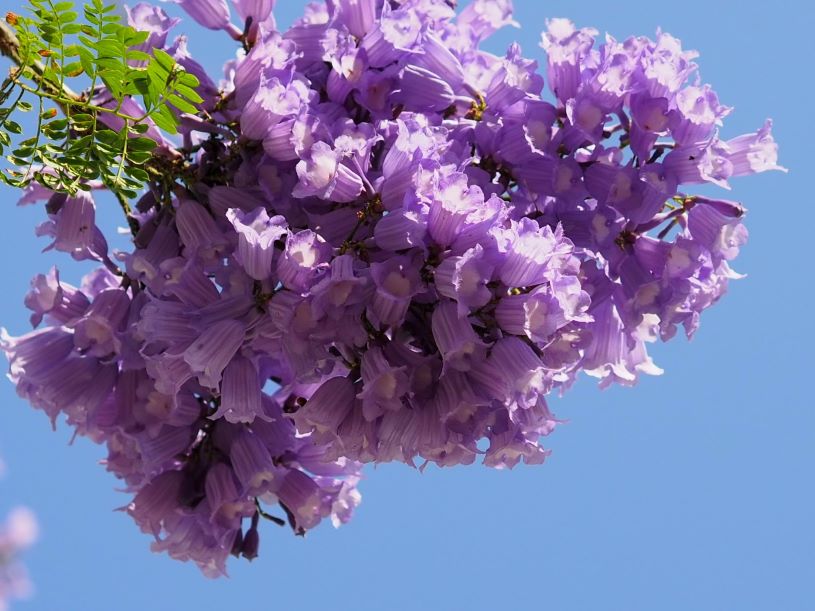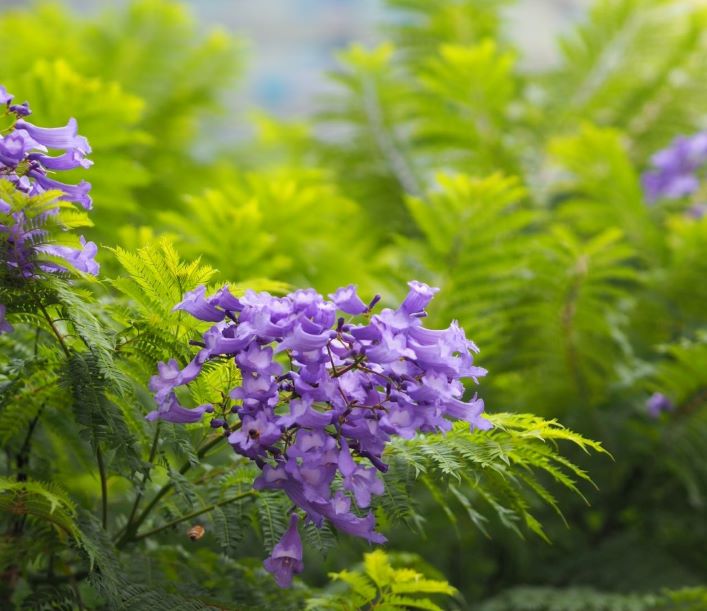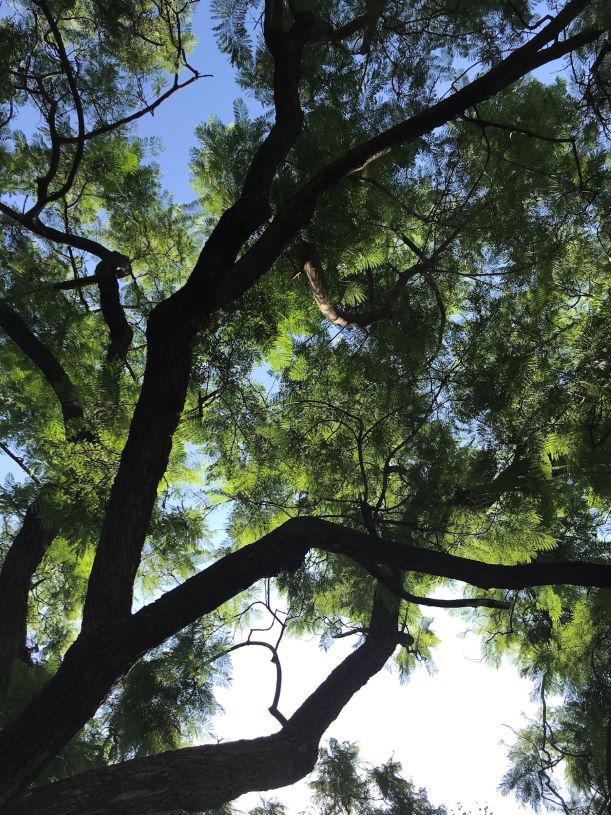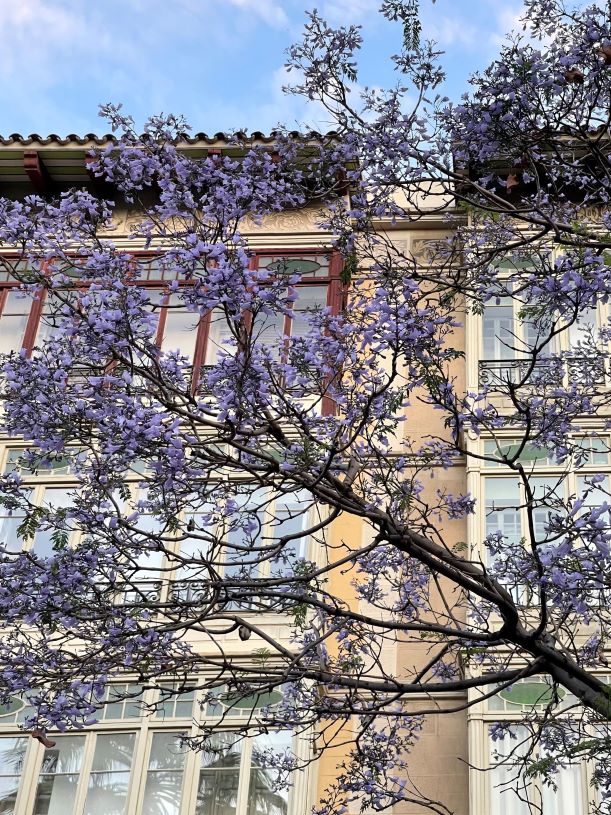SMA announces 2023 Urban Tree of the Year

The Society of Municipal Arborists (SMA) has named blue jacaranda (Jacaranda mimosifolia) its 2023 Urban Tree of the Year. Spin the globe, and at the right time of year, you’ll find blue jacaranda lighting up streets and parks with its blue-purple flower panicles in every subtropical or warm climate, including regions within Australia, Myanmar, India, South Africa, Spain, Chile, and the United States. Even climates with an occasional light frost may support blue jacaranda trees.

Though its distribution as a cultivated tree is vast, blue jacaranda’s native range is limited to southern Bolivia and northwestern Argentina. As is often the case for trees occurring in such a narrow range, the native blue jacaranda population in these South American pockets is considered vulnerable.
It should be noted that in some of the same places where jacaranda is celebrated (parts of Queensland, Australia and in Pretoria, South Africa, for instance), there have been concerns about jacaranda’s invasiveness and displacement of native plants in those regions. In such places, municipalities have had to strike a balance between these concerns and the powerful public affinity for the showy tree.
Sitara Gare is the Planning Project Arboriculture Coordinator for Brisbane City Council, Australia, and a jacaranda fan.
“Here in subtropical Brisbane, jacaranda is tolerant of periodic drought,” she said. “It is often planted as a park feature tree in avenues or groups due to its iconic showy carpet of lilac-blue, trumpet-shaped flowers that drop in November before it grows its new leaves. The flowering period is only up to three weeks every year, but it proves a stunning spectacle.”

Gare says that the mature height of jacaranda in Brisbane can vary depending on the site conditions, from as small as 9 m (30 feet), up to 25 m (82 feet). She says that its success as a street tree is largely dependent on the amount of growing space and the site conditions it’s given; jacaranda is most suited to larger sites where the tree roots have adequate, uncompacted soil volume.
According to Gare, Jacaranda mimosifolia does not like exposed or windy sites. She says that as a young tree, it needs to be staked to keep it growing straight and strong. “We’ve found that jacaranda benefits from formative pruning at years three and seven after planting,” she says. It can be grown from both seed and cuttings. Jacaranda can grow in part shade, but it flowers best in full sun.
Felipe Alberto Fuentes Ramírezis an Urban Planner for the municipality of Calera de Tango in Chile.
“The natural grace of its crown and its large, fragrant, violet-blue flowers make it one of the favorite species to plant along the streets and avenues of Santiago,” Ramírez said. “However, it should be noted that jacaranda’s canopy provides a modest amount of shade.”

Fuentes says that in general, in Chile, the jacaranda does not suffer from the presence of many pests and diseases, except for the flowers and buds, which sometimes attract aphids that do not cause major damage.
“We don’t recommended planting it along bicycle paths, since its fruits could affect mobility,” Fuentes said. “Apart from that, it can be used along streets and avenues with low vehicular flow and reasonable above- and below-ground planting space and, of course, in parks, squares, and gardens.”
Fuentes says that in arid parts of Chile, jacaranda is not very resistant to drought, so it is necessary to water it well during establishment, as well as during periods of low natural rainfall. “This requirement could be affecting the young specimens planted in central Chile, which is currently suffering from a severe drought due to climate change,” he says.
“However, its spectacular violet-blue flowering, which floods the urban landscape with a soft aroma and color in Chilean spring until early summer (September to December), and its elegant natural appearance and fine foliage put the jacaranda on the podium of the most attractive trees currently planted in our country,” Fuentes said.
The mission of the Society of Municipal Arborists (SMA) is to build the confidence, competence, and camaraderie of professionals who manage trees and forests to create and sustain more livable communities.


